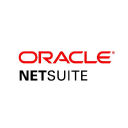How We Created An Impossible Circuit Printer
Hello! Who are you and what business did you start?
Hey! I’m Alroy from Voltera. We make electronics manufacturing equipment.
Wait… most people begin to yawn when they hear “manufacturing” and “supply chain” so let's try this again: Voltera designs and builds a circuit printer that shrinks an entire electronics factory down to the size of a laptop.
We have thousands of units in over 65 countries being used by hardware businesses of all sizes to bring new ideas to market faster, academic and government researchers for breakthrough technologies, and educators in high schools, colleges, and universities to train the engineers of the future.

What's your backstory and how did you come up with the idea?

Download the report and join our email newsletter packed with business ideas and money-making opportunities, backed by real-life case studies.

Download the report and join our email newsletter packed with business ideas and money-making opportunities, backed by real-life case studies.

Download the report and join our email newsletter packed with business ideas and money-making opportunities, backed by real-life case studies.

Download the report and join our email newsletter packed with business ideas and money-making opportunities, backed by real-life case studies.

Download the report and join our email newsletter packed with business ideas and money-making opportunities, backed by real-life case studies.

Download the report and join our email newsletter packed with business ideas and money-making opportunities, backed by real-life case studies.

Download the report and join our email newsletter packed with business ideas and money-making opportunities, backed by real-life case studies.

Download the report and join our email newsletter packed with business ideas and money-making opportunities, backed by real-life case studies.























